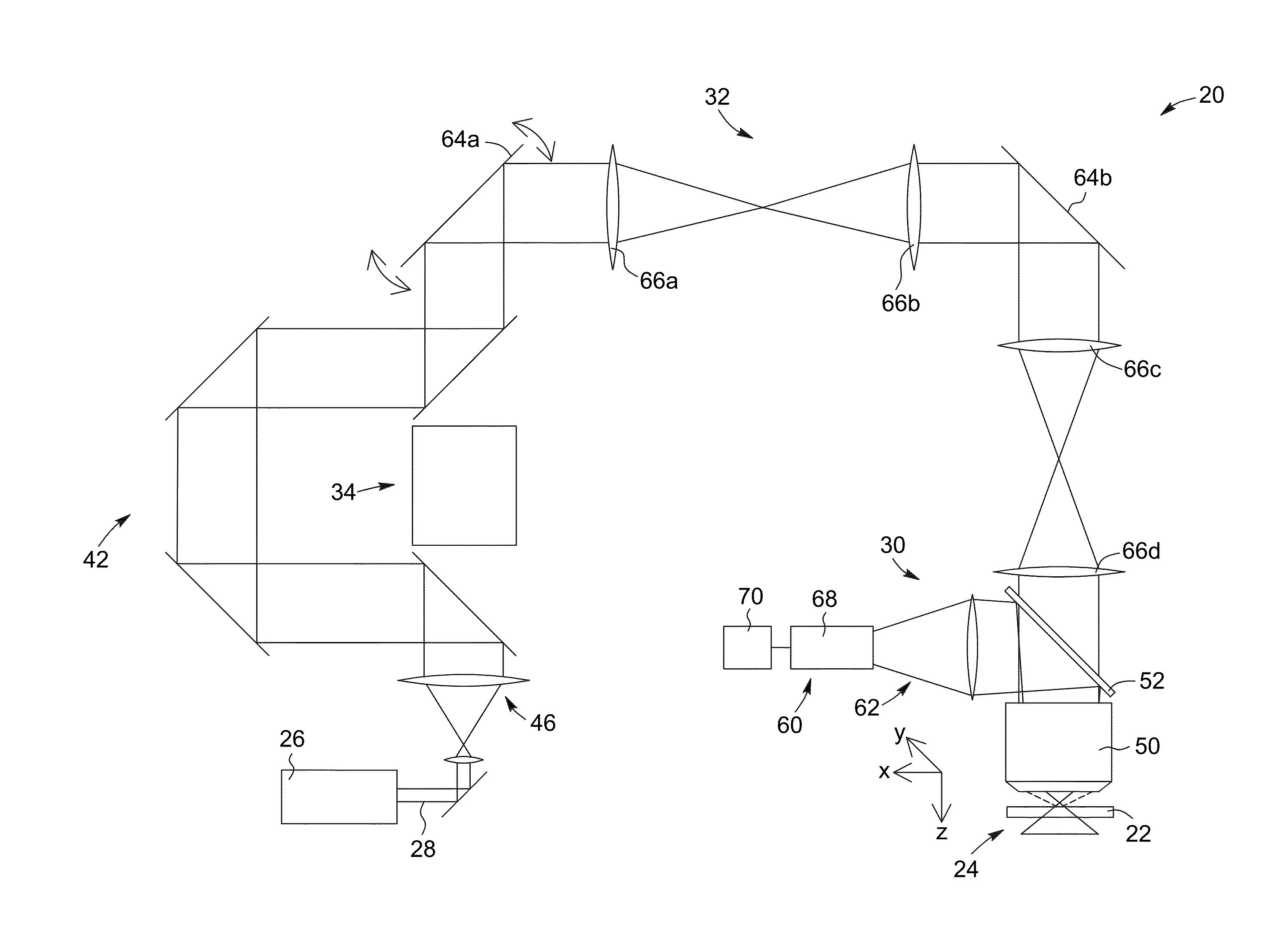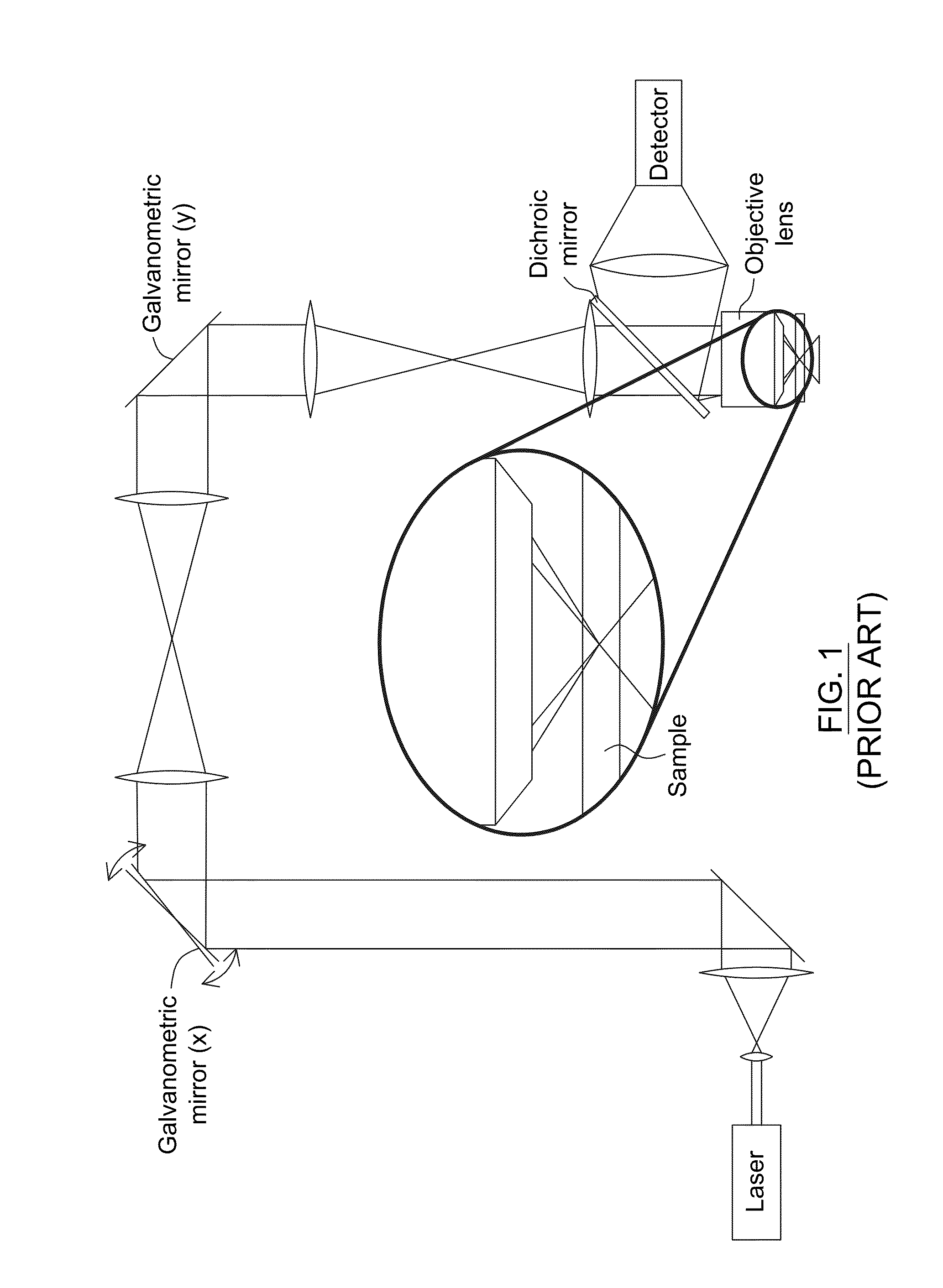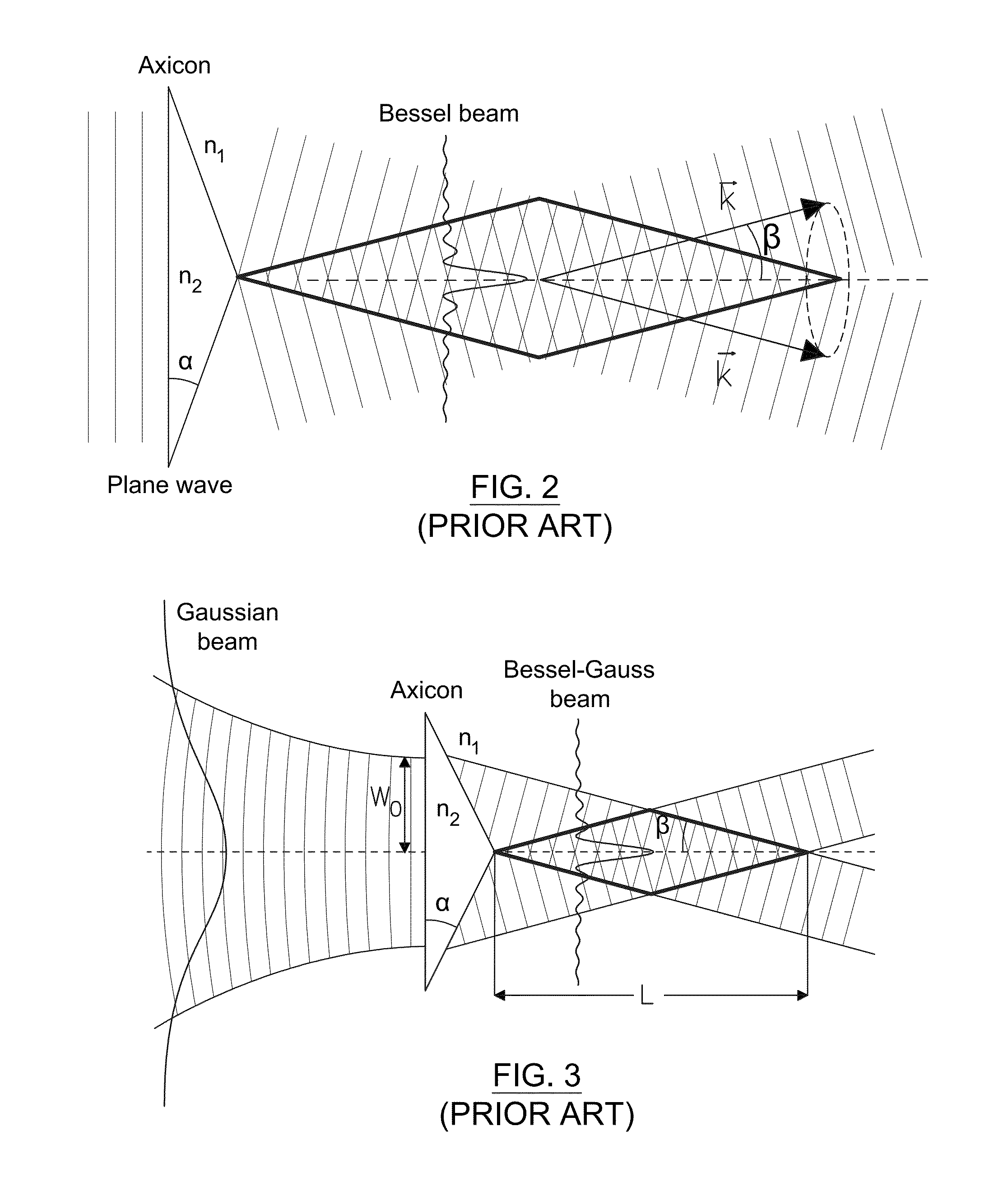Method and system for obtaining an extended-depth-of-field volumetric image using laser scanning imaging
a laser scanning and depth of field technology, applied in the field of laser scanning imaging systems, can solve the problems of reducing the acquisition speed of thick or bulky samples, loss of temporal resolution which may not be suitable, and inability to apply laser scanning microscopy
- Summary
- Abstract
- Description
- Claims
- Application Information
AI Technical Summary
Benefits of technology
Problems solved by technology
Method used
Image
Examples
Embodiment Construction
[0055]In the following description, similar features in the drawings have been given similar reference numerals and in order to weigh down the figures, some elements may not be referred to on some figures if they were already identified in preceding figures. It should also be understood herein that the elements of the drawings are not necessarily drawn to scale and that the emphasis is instead being placed upon clearly illustrating the elements and structures of the present embodiments.
[0056]The present invention generally relates to a laser scanning imaging system and method for obtaining an image of a volume of a sample, wherein the image has an extended depth of field, that is, axial resolution, compared to standard systems and methods. The system and method according to embodiments of the present invention generally involve converting an input laser beam into an excitation non-diffracting beam in a stepwise manner, and projecting the excitation non-diffracting beam thus obtained...
PUM
 Login to View More
Login to View More Abstract
Description
Claims
Application Information
 Login to View More
Login to View More - R&D
- Intellectual Property
- Life Sciences
- Materials
- Tech Scout
- Unparalleled Data Quality
- Higher Quality Content
- 60% Fewer Hallucinations
Browse by: Latest US Patents, China's latest patents, Technical Efficacy Thesaurus, Application Domain, Technology Topic, Popular Technical Reports.
© 2025 PatSnap. All rights reserved.Legal|Privacy policy|Modern Slavery Act Transparency Statement|Sitemap|About US| Contact US: help@patsnap.com



